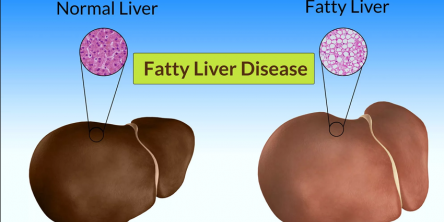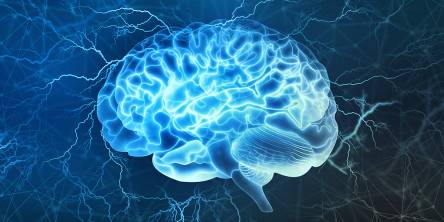5 Signs You Should Have Your Headache Checked by a Doctor

People frequently see headaches as a minor irritation that they must endure, much like taxes or nasty weather. Fortunately, most headaches are not severe. But what should you do if yours is very unpleasant or keeps interfering with your regular activities? More than 150 distinct types of headaches exist. You should never tolerate severe, so search "best headache specialist near me" if this problem is recurrent. It might be challenging to determine whether what you're going through is typical or an indication of something more serious. Learn more about when to be concerned about a headache by reading on.
1. Headaches that keep on coming back
Chronic headaches are those that last for a period exceeding three months and persist for at least 15 days each month. Without professional help, they might cause problems and interfere with your everyday life. If you often get two or more headaches each week and the symptoms are preventing you from going about your daily routine, you should see a doctor. There are several potential underlying factors, including everything from simple tension headaches to significant brain disorders. Your doctor will decide on the best course of treatment and the most likely culprit. After recognizing your headache triggers with the help of a specialist, you can gradually change your daily routine to reduce your symptoms and their occurrence.
2. Long-lasting headaches
A persistent headache can be an awful thing to deal with that frequently causes people to avoid work or school. However, on its own, it often doesn't raise any red flags. It may be time to visit the doctor to find out what the problem is if you discover that you have had a headache for an entire week straight. A persistent headache can be a marker of a headache disorder, even if it doesn't always indicate a serious underlying condition. If you have a headache that lasts more than a week, you should consult a doctor. Speak with your doctor if you are struggling to function normally or need to take drugs often to control the pain.
3. Cognitive and personality changes
Seek urgent medical attention right away if you or a loved one develops a severe headache along with disorientation, weakness, or lack of coordination. These signs and symptoms might indicate an impending stroke. It will be easier to know what to look for if you are aware of the symptoms and indicators of a stroke. Get someone to the emergency department as soon as possible if they are having problems walking or speaking or if their speech is slurred. If a stroke is not treated, it might cause lifelong brain damage.
4. Severe pain
You should get headache treatment right away if you are experiencing the worst headache of your life. Thunderclap headaches, or intense, abrupt headaches, are not necessarily dangerous but can be an indication of a disease that might be potentially fatal. A sudden, severe headache may be a sign of a brain aneurysm or brain hemorrhage. Vision blurriness, unconsciousness, and convulsions are other warning symptoms. A coma or even death can result from untreated aneurysms. Only 10% of thunderclap headaches are brought on by bleeding in the brain, but patients should still seek care immediately. A CT scan may be requested by a doctor to rule out an aneurysm or to determine appropriate treatment.
5. Fever and stiff neck
There is a possibility that you may have meningitis if you also have a fever, stiff neck, and an acute headache. Meningitis is an infection of the membranes around the brain and spinal cord. Muscle soreness, nausea, sleepiness, and a rash are further symptoms. Meningitis necessitates urgent medical care. However, bacterial meningitis advances swiftly and can cause major long-term damage or even death. Some varieties of the sickness will go away on their own. Seek emergency medical attention if you believe you or another person may have meningitis. Your doctor will figure out the best course of action.
Similar Articles
We often experience small discomforts or symptoms that seem insignificant, like headaches, fatigue, or brittle nails. Many times, we brush them off, thinking they’ll go away on their own. However, these minor issues might be your body’s way of telling you that something more serious is going on.
According to the World Health Organization (WHO), half to three-quarters of adult persons globally experienced a headache in the past year. Unfortunately, tension headaches are one of the most prevalent symptoms you can have. Furthermore, some tension headaches resemble migraine headaches, making matters worse.
The review of Yakrit Plihantak Churna is going to be amazing. You will know the facts, does it works along its benefits. The liver is the main engine of the body. It is the second largest gland in the body.
A podiatrist is a doctor who focuses on treating foot and ankle ailments. If you have specific medical issues, you may need to see a podiatrist for therapy that your primary doctor cannot offer. Don't overlook pain in your lower leg, foot, ankle, or toes.
A podiatrist is a medical expert who focuses on foot and ankle care. There are various reasons you may need to see one.
Swelling is a common issue that can strike anyone. Occasional leg swelling may occur after a long day on your feet or from sitting too long. However, if your legs are regularly swollen, it could indicate a serious underlying condition. Swelling can cause leg pain, loss of sensation, redness, and itching. If left unmanaged, it can lead to stiffness and difficulty walking.
Choosing the best aesthetic medicine courses will significantly boost your career. Medical professionals looking to expand their practice and stay ahead in the field of aesthetic medicine will find these training programs invaluable
Lower back pain is like a storm gathering over the horizon all day. The dull discomfort, the throbbing feeling, and the stiffness all add up until, like a thunderclap, it explodes into full-fledged pain. It penetrates your whole body, removing choice and control. Your mobility is restricted, making daily tasks difficult, and if not addressed, it can cause permanent damage.
Even though migraine affects over one billion people around the world, it has long been neglected as one of the most devastating diseases on the planet. Migraine headaches are a neurological disorder characterized by recurrent pounding or throbbing headaches, nausea and vomiting, and sensitivity to light, sound, and strong odors









